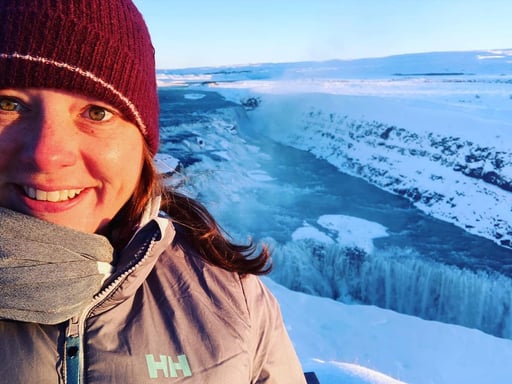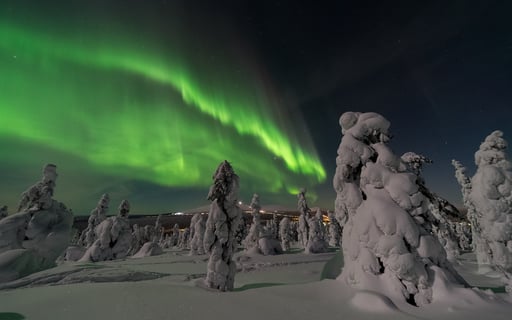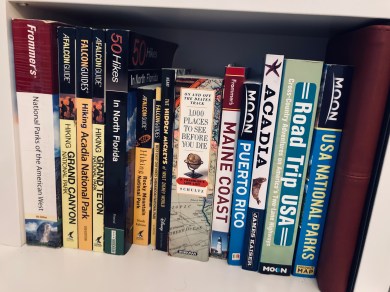Five Things to Love about Off-Season Travel (updated 2023)
It is currently the off-season for travel in Berlin. It’s winter, it’s cold and it gets completely dark at 4 pm but here I am enjoying the city anyway. I’ve definitely done my share of off-season travel: January in Chicago (brr!), Thanksgiving in the Smoky Mountains, winter break in Washington, DC, anytime in summer in Florida. Heck, I even sent my husband to Alaska in early May. Despite the sometimes-challenging weather circumstances, off-season travel can be a wonderful way to see the world – and in some cases, it may even be better than peak season. Here are five reasons I love off-season travel.

1. Off-Season travel can be a better value – both cost-wise and time-wise.
You’ve probably heard this one before – off-season travel can be cheaper and in some instances, a downright bargain. Air traffic has rebounded some from the height of the pandemic, and there are still decent fares to be had for peak-season travel. However, I probably paid about half as much on my plane ticket to visit Europe at the end of November as I would have to come in June. Part of the reason I’ve done so much off-season travel is precisely BECAUSE of this fact; more than once, I’ve planned a trip around a cheap airline ticket that was too good a deal to pass up. Caribbean cruises are another example – the 4-night Bahamas trip that would cost you $1500 per person in June could be found for $600 per person in January. Disney Resorts are at their least expensive during the week after Labor Day in September and the first full week after New Year’s in January. While not empty, beach resorts in Florida can be a good value in August. And on the list goes.
What you may not have heard is that off-season travel can save you time as well as money. Sure, the hours are shorter at attractions, and depending on the time of year, it may get dark really early in the day which limits your daylight sightseeing hours. Obviously, some activities (snow skiing, for example, at a ski resort town) may not be available during the off-season. But for many locations, the shorter hours are easily offset by the lack of crowds. You’ll spend a LOT less time fighting through crowds, standing in line, and waiting for available tables at restaurants. You’ll have your choice of seats on the hop-on/hop-off tour bus. Your hotel of choice will likely have plenty of rooms available. Even if you only spend 30 minutes less waiting in line due to the lack of crowds, at the end of a week’s vacation you’ve gained three-and-a-half extra hours available for sightseeing, shopping, and the like. That’s well worth a museum opening at 10 am instead of 9 am to me!
2. Off-Season travel can feel more “authentic.”
Depending on the location, a destination can take on a different quality during peak season (just ask the residents of Daytona Beach during Spring Break!). But when the crowds have gone home, the destination reclaims all of the things that attracted people to it in the first place – charm or natural beauty or culture or the people or whatever. One of my favorite things about traveling in cities during the off-season is seeing the residents out living in their cities – using the parks, enjoying the cafes, visiting the Christmas markets with little ones in tow, commuting to work, stopping by the bakery on the way home. Of course, the locals are present all year round, but they seem more visible when there are fewer visitors around. I’m endlessly fascinated by the rhythms of daily life in other parts of the world away from home and visiting in the off-season makes it easier to observe and even engage in daily life.
3. Off-Season travel is made for introverts, lovers of hygge, and early risers.
Although I now live in Illinois, I lived for many years in Florida where “winter” lasts about two weeks. I did not miss shoveling show, but I did get a craving for the coziness of winter right before the holidays. “Hygge,” which is a Danish word meaning “a feeling of cozy contentment” is certainly on the menu here in Europe during the off-season. Fireplaces, cozy fur-lined benches in restaurants, and Christmas lights are everywhere. Plus I got to break out my fashionable fall/winter boots! Because of the short daylight hours, off-season touring can mean getting up and out the door relatively early and perhaps an early evening back at the hotel – which suits this introvert just fine. Off-season solo travel allows this even more!
4. Off-Season requires less planning ahead (but perhaps a bit more organization).
Because there are fewer tourists during the off-season, it’s not as critical to book things like hotels, restaurants, activities, and shows quite as far in advance. Having a place lined up to crash is always a good idea, but in some destinations, you could certainly roll into town and find a hotel that suits you. Activities and shows are less likely to sell out, so you may be able to buy tickets on the day or even just a few minutes before the performance or activity begins. One major advantage to this is that you can plan out your days with the weather in mind. If the day is fine, you can choose the outdoor activity and if the day is rainy, pick the museum. If you booked well in advance, you might be stuck inside on a glorious day and outdoors in the cold, wet rain!
5. Off-Season travel may include special experiences, festivals, shows, symphonies or other “seasonal” activities.
Peak season often comes with food fairs or music festivals, but off-peak travel can bring a whole smorgasbord of cultural variety. Symphonies, operas, saints day celebrations, Carnivale, fancy parties, Christmas Markets – all of these typically happen during the low season for travel. If off-season means winter, you may be able to enjoy outdoor winter activities like sledding or ice skating; if off-season means summer, perhaps you’ll enjoy a gondola ride to the top of a mountain, gazing at meadows carpeted with wildflowers along the way or a beach all to yourself in the Caribbean.
Caveat 1: Weather
The one major drawback to off-season travel is the weather. Typically, off-season is off-season for a reason. It’s cold in Berlin in November, and south Florida is a disgusting swamp in July. Smart packing can make a huge difference. Layers, a good coat, hat and gloves are essential for winter travel; loose-fitting clothing and a sunhat are necessities for summer. I like to remind myself that good weather isn’t guaranteed even during peak season, and a sunny winter’s day can happen just as easily as a cold and rainy one.
Caveat 2: Disorganized travelers miss out
Although you may not have to plan and book as much in advance when traveling off-season, you will need to be organized and pay attention to opening schedules and hours for the attractions you’d like to visit. Many attractions reduce hours or even days they are open during the off-season, and it would be a shame to miss a must-see sight because you didn’t realize it was only open three days a week from November to March. Similarly, if you are traveling over a major holiday (such as Christmas), double-check to see how that may affect any plans that you have. Some places carry on as usual on a major holiday, while others essentially shut down and even getting around can be difficult.
A Tip for Off-Season Travel
Bring sunscreen and lip balm, no matter what time of year it is! You’ll be outside far more than you think you will be, and you can get a sunburn even in the middle of winter in Iceland!
Related
How to be a Confident Traveler, Part 4: When Disaster StrikesSimilar post
What I Did Over the Summer, 2022 VersionSimilar post
Guest Interview: Fred Carlson, ServacationsSimilar post




